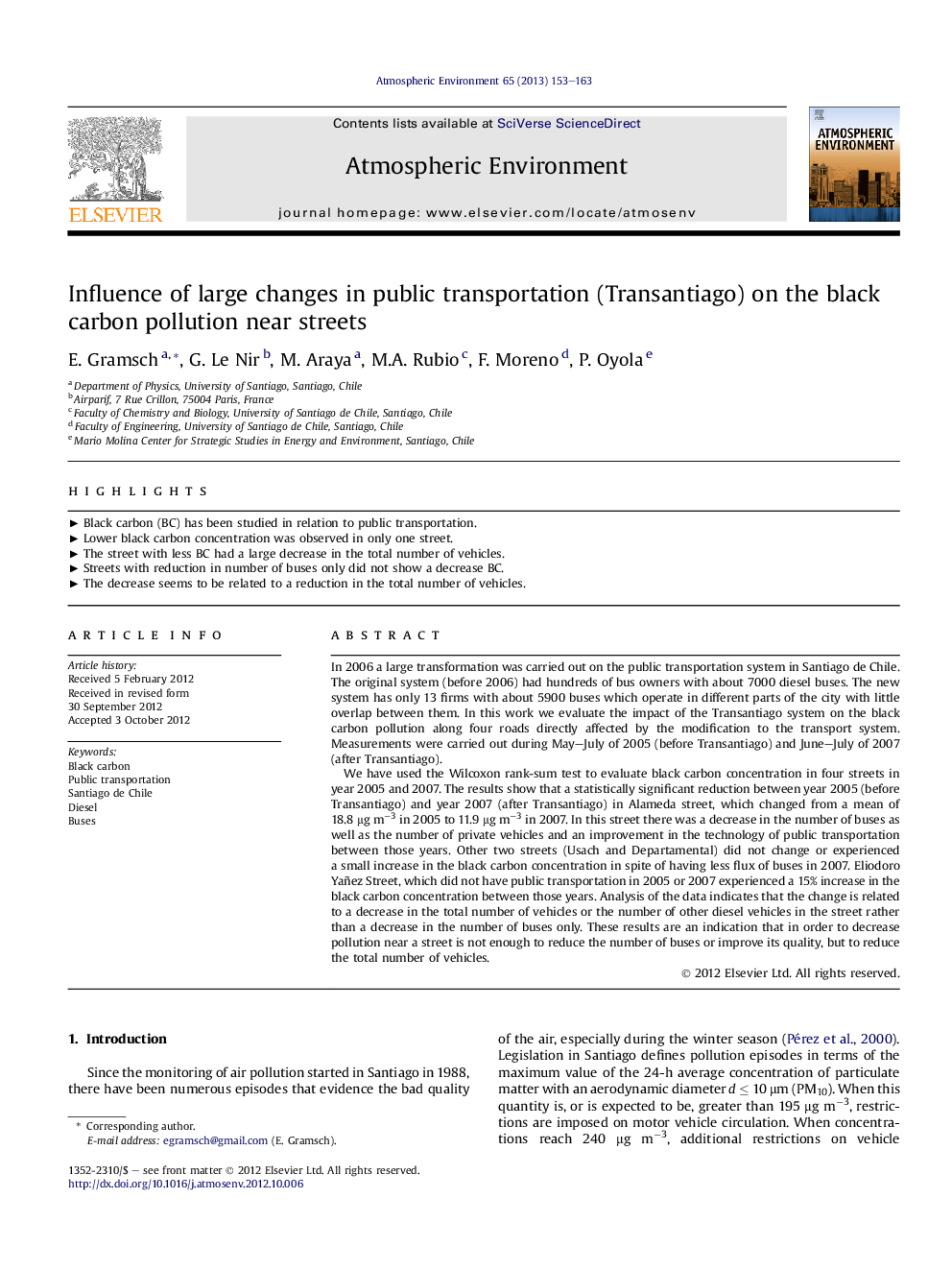| Article ID | Journal | Published Year | Pages | File Type |
|---|---|---|---|---|
| 4438534 | Atmospheric Environment | 2013 | 11 Pages |
In 2006 a large transformation was carried out on the public transportation system in Santiago de Chile. The original system (before 2006) had hundreds of bus owners with about 7000 diesel buses. The new system has only 13 firms with about 5900 buses which operate in different parts of the city with little overlap between them. In this work we evaluate the impact of the Transantiago system on the black carbon pollution along four roads directly affected by the modification to the transport system. Measurements were carried out during May–July of 2005 (before Transantiago) and June–July of 2007 (after Transantiago).We have used the Wilcoxon rank-sum test to evaluate black carbon concentration in four streets in year 2005 and 2007. The results show that a statistically significant reduction between year 2005 (before Transantiago) and year 2007 (after Transantiago) in Alameda street, which changed from a mean of 18.8 μg m−3 in 2005 to 11.9 μg m−3 in 2007. In this street there was a decrease in the number of buses as well as the number of private vehicles and an improvement in the technology of public transportation between those years. Other two streets (Usach and Departamental) did not change or experienced a small increase in the black carbon concentration in spite of having less flux of buses in 2007. Eliodoro Yañez Street, which did not have public transportation in 2005 or 2007 experienced a 15% increase in the black carbon concentration between those years. Analysis of the data indicates that the change is related to a decrease in the total number of vehicles or the number of other diesel vehicles in the street rather than a decrease in the number of buses only. These results are an indication that in order to decrease pollution near a street is not enough to reduce the number of buses or improve its quality, but to reduce the total number of vehicles.
► Black carbon (BC) has been studied in relation to public transportation. ► Lower black carbon concentration was observed in only one street. ► The street with less BC had a large decrease in the total number of vehicles. ► Streets with reduction in number of buses only did not show a decrease BC. ► The decrease seems to be related to a reduction in the total number of vehicles.
